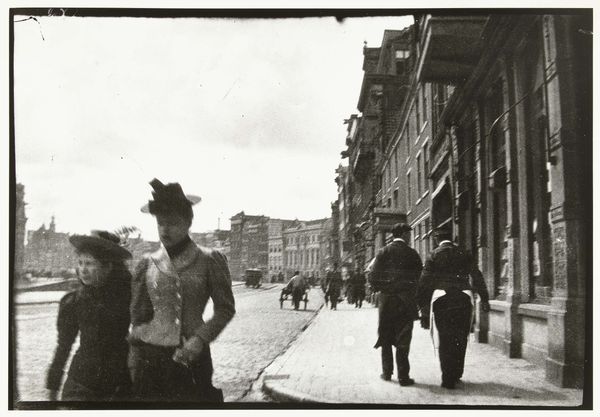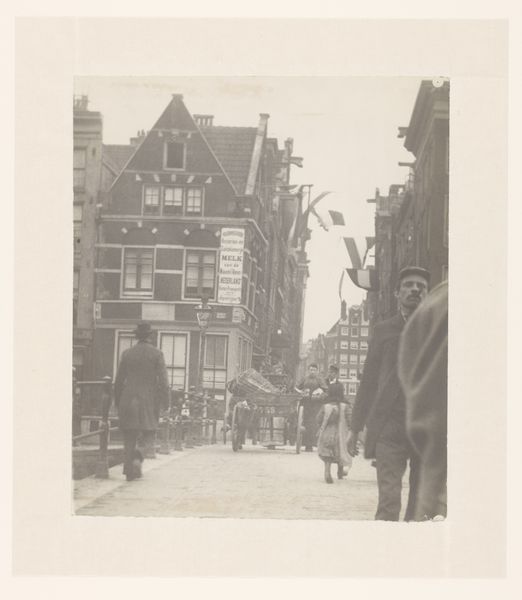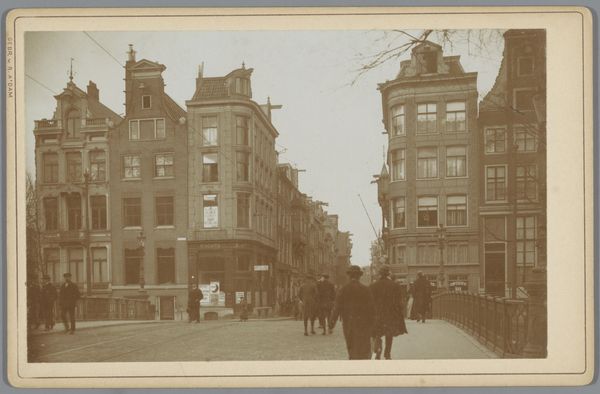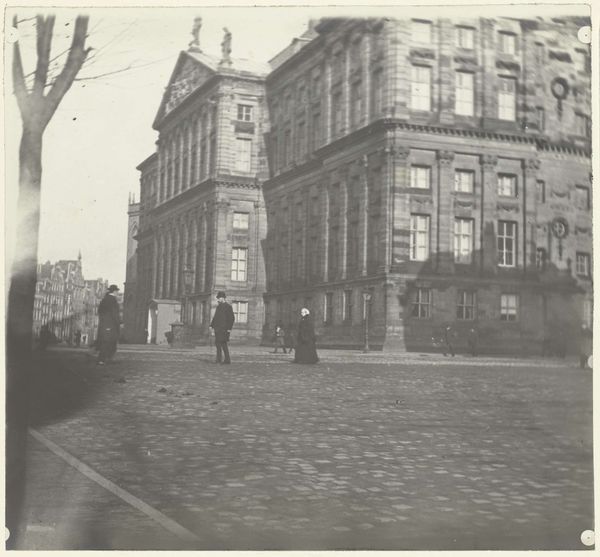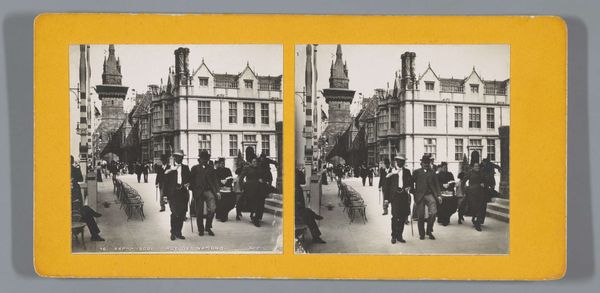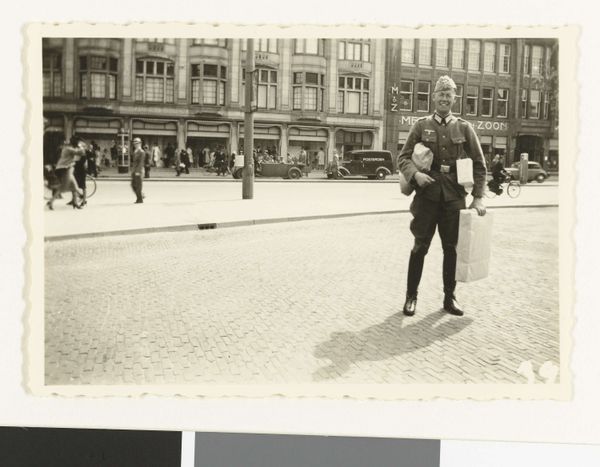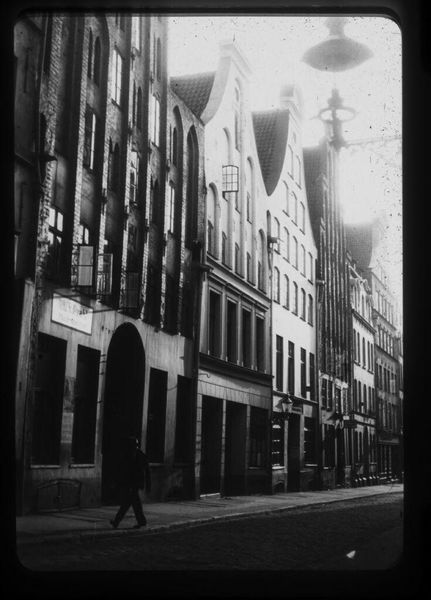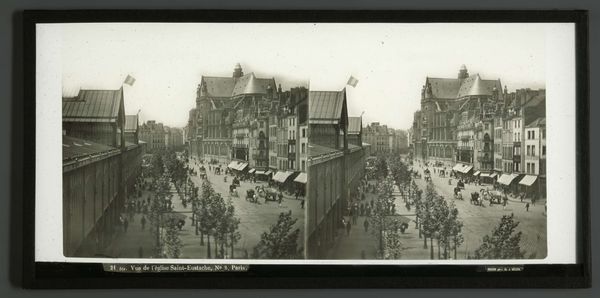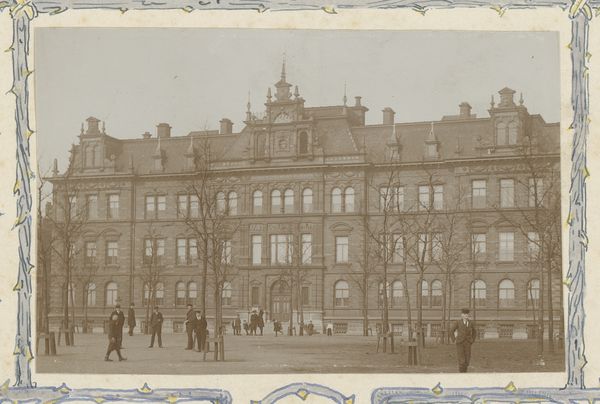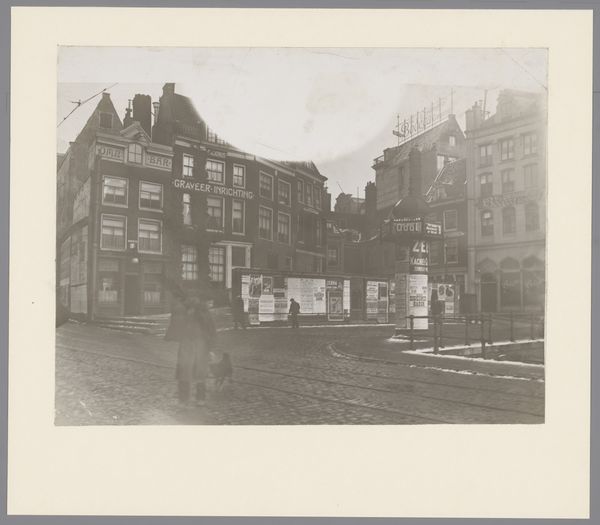
photography
#
portrait
#
dutch-golden-age
#
street-photography
#
photography
#
cityscape
#
genre-painting
#
realism
Dimensions: height 50.5 cm, width 39.3 cm, height 40.0 cm, width 30.5 cm
Copyright: Rijks Museum: Open Domain
Editor: Here we have George Hendrik Breitner's photograph, "Gezicht op de Dam in Amsterdam," taken sometime between 1890 and 1910. It's striking how modern it feels, capturing this bustling city square. What draws your eye to this piece? Curator: What fascinates me about Breitner’s Dam Square photographs is their layered depiction of Amsterdam's burgeoning commercialism. Note how the material realities of everyday life are foregrounded - the cobblestone street, the clothing of passersby, even the blurred motion suggesting the pace of urban labor and consumption. Editor: It does feel like a snapshot of real life. Curator: Precisely. Consider the means of production here. Photography itself was rapidly becoming industrialized and accessible. Breitner wasn’t just passively recording; he was actively selecting and framing, using new technologies to capture the lived experience of Amsterdam’s inhabitants within this historical space. Editor: How does the context of its creation influence our understanding? Curator: Well, look at it this way, photography democratized image-making but also turned people into objects of observation and potential consumers in ways previously unseen. The photograph blurs the lines between documentary and spectacle. Even those ordinary individuals in the square unwittingly perform for the camera, their images contributing to the circulation of urban life as a commodity. Does that shift your perspective at all? Editor: Definitely. I hadn’t considered the implications of mass image production on something so seemingly simple as a street scene. I’m now wondering how photography changed both artistic labor, and our relationship with reality. Curator: Exactly, we have to consider it not only as a representation, but a record of production that informs its meaning. This perspective offers a deeper appreciation.
Comments
No comments
Be the first to comment and join the conversation on the ultimate creative platform.

